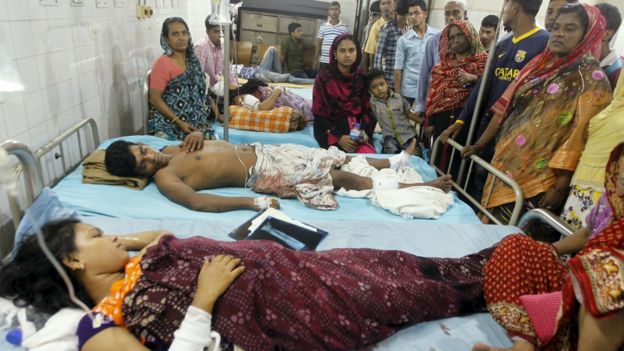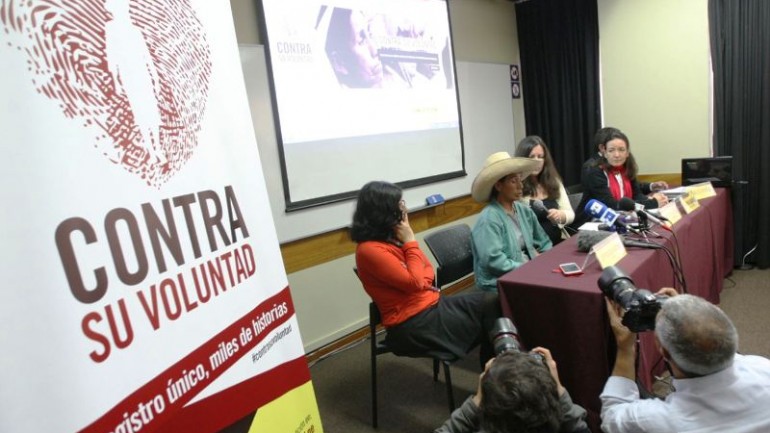|
An Eritrean Migrant was Brutally Beaten by Israeli Mob
By Brittani Howell
Impunity Watch Reporter, The Middle East
JERUSALEM, Israel – Last Sunday, an Eritrean migrant was shot and then brutally beaten by a mob. The Eritrean migrant, Habtom Zerhom, was mistaken as a second attacker in an incident at a bus station in Beersheba.
Zerhom took cover in the bus station amid the chaos. A security video shows Zerhom crawling in all fours around a kiosk when he was shot. A security guard, mistaking Zerhom as an additional attacker, ran at Zerhom and opened fire.
While Zerhom lay on the floor, a mob of people began to kick him and through things at him. The mob then rammed him with a bench, as Zerhom lay on the floor helpless. Israeli police officers and a few passers-by attempted to protect Zerhom from the mob.
Meir Saka, a passer-by who tried to protect Zerhom, told Channel 10 TV, “It doesn’t matter if it was a terrorist or not. It was a man lying on the ground that couldn’t move. I couldn’t sleep at night, from seeing him, his blood.”
According to doctors at Soroka Medical Center, Zerhom died from the bullet wound in combination with the injuries he sustained from being kicked repeatedly. One man who had participated in the mob attack told Israeli Army Radio that, “If I had known he wasn’t a terrorist, believe me, I would have protected him like I protect myself.” He continued, I didn’t sleep well at night. I feel disgusted.”
Israeli police announced that there will be an investigation to determine who was involved in the mob attack against Zerhom. Luba Samri, Israeli police spokeswoman, stated “It should be noted that the police see this in a very severe light and will not allow people to take the law into their own hands.”
The mayor of Jerusalem, Nir Barkat, in response to the bus station shooting, told all licensed gun owners to carry their weapons to assist an overstretched security force. This has drawn complaints from critics, who argue that this aids to an already charged atmosphere. A Palestinian official, Hanan Ashrawi, stated, “They are creating a mentality of lynch mobs and of course feeding the culture of hate and racism.”
Currently, there are as many as 34,000 Eritrean migrants in Israel. Israel has refused to give them refugee status, and instead classifies them as migrant workers but has not deported them because of the dangerous situation in Eritrean.
For more information, please see:
CNN – Netanyahu After Mob Beating: ‘No One Will Take Law into his Own Hands’ – 19 October 2015
Reuters – Eritrean Mistaken for Gunman Killed in Israel Bus Station Attack – 19 October 2015
The New York Times – Fatal Beating of Eritrean Prompts Soul-Searching in Israel – 19 October 2015
The Washington Post – Israel Probes Mob Assault on African Bystander Shot Amid Latest Violence – 19 October 2015
Bangladesh Rejects Islamic State Claim of Responsibility for Dhaka Attacks
By Christine Khamis
Impunity Watch Reporter, Asia
DHAKA, Bangladesh—
Assailants threw homemade bombs into a crowd gathered for Ashura, a Shiite Muslim holiday, on Saturday. The Islamic State claimed responsibility for the attacks, but the Bangladeshi government has since rejected their claim.

The assailants threw a set of homemade bombs into a crowd of around 20,000 Shiites as they gathered at Hussaini Dalan, a historical Shiite landmark, for a procession through Dhaka’s old quarter. One person was killed and over one hundred people were injured in the blasts. Despite the bombing, thousands continued the procession.
Police recovered two other undetonated bombs from the scene of the attack. They have detained two suspects in connection with the bombings.
Bangladeshi authorities believe that the Islamic State had no involvement in the bombings. The spokesman for the Dhaka police, Muntashirul Islam, stated that the police had linked any militant group to the bombings.
Bangladesh’s prime minister, Sheikh Hasina, states that international terrorist groups cannot function in Bangladesh. Ms. Hasina believes that the violence comes from opposition like Jamaat-e-Islami and the Bangladeshi National Party. Officials from the Awami League, Ms. Hasina’s political party, support her belief and state that the Islamic State does not exist in Bangladesh. Ms. Hasina and the Awami League believe that the Dhaka bombing was carried out to incite panic among citizens.
However, according to SITE Intelligence Group, which tracks radical Islamic propaganda and other information, the Islamic State has taken responsibility for the bombings. SITE Intelligence Group reported that a social media statement released by the Islamic State said that “soldiers of the Caliphate in Bangladesh” detonated the bombs in a temple of “polytheists in the city of Dhaka, during the holding of their polytheist rituals.” The statement has not been independently confirmed.
Tensions have been running high in Bangladesh for weeks in the wake of reports of impending terrorist attacks. The United States government and some other foreign governments recently reported that they had gathered intelligence indicating that a terrorist group linked to the Islamic State was planning to attack foreigners in Bangladesh. Some foreign embassies have even issued warnings to their citizens residing in Bangladesh against walking outside or attending gatherings.
The bombings are the third round of violent acts for which the Islamic State has taken credit in the past month. During that time, two foreigners, an Italian man and a Japanese man, were shot and killed in Bangladesh.
The Ashura procession, in which Shia Muslims mourn the martyrdom of the Prophet Muhammad’s grandson, has occurred annually for over four centuries without violence. The bombings were the first time that Shiite Muslims, a minority group, were targeted in Bangladesh. Shiites have historically not been discriminated against and attacks against them are rare.
For more information, please see:
The Indian Express – Bangladesh Rejects Islamic State Claim of Attack on Shiites – 25 October 2015
BBC – Dhaka Blasts: One Dead in Attack on Shia Ashura Ritual – 24 October 2015
The Guardian – One Killed and Scores Wounded in Attack at Shia Site in Bangladesh Capital – 24 October 2015
International Business Time – Bangladesh Bomb Attack: ISIS Claims Responsibility for Blasts That Killed 1, Injured Over 100 in Dhaka – 24 October 2015
New York Times – ISIS Claims Responsibility for Attack in Bangladesh – 24 October 2015
Syria Justice and Acountability Centre: Kafranbel Mural Raises Concerns on The Future of Memorialization
This week, Raed Fares, a prominent Syrian activist, sharedpictures of a recently completed mural depicting the chronology of the Syrian revolution. The mural is located inKafranbel, a town in the Syrian province of Idlib made famous by its residents’ signs and banners skewering the Assad regime and expressing outrage that the world has not done more to stop the killing in Syria. At 24 meters long and comprised of over one million pieces of stone, the mural traces the Syrian conflict from the peaceful demonstrations in 2011 to the present day, and includes pictures of important opposition and civil society leaders. The creators of the mural also included pictures of the project’s funder, Ghassan Aboud, a Syrian businessman and owner of Orient TV and Orient foundation who has written several articles attacking minority groups in Syria and has used his media institution as a platform to encourage similar views, as well as Faisal al-Qassem, a controversial Syrian Al Jazeera talk show host who has been accused of inciting sectarian tension.

Following the posting of these pictures, many Syrians took to social media to express their objection to Mr. Aboud and Mr. al-Qassem’s inclusion in the mural. In particular, many alleged that Mr. Aboud was only included because he funded the project. Indeed, Mr. Fares, seemed to acknowledge this in a response to one of the many comments on his Facebook page.
While SJAC is not in a position to comment on who should or should not be included in the mural, this incident points to a more troubling prospect: the use of money or power to influence the memorialization process. As one of the core tenets of transitional justice, memorialization (i.e., the creation of museums, memorials, and other symbolic initiatives) is linked to the idea of keeping the memory of victims alive, while ensuring public recognition of past crimes. Such initiatives have the potential to contribute to the creation of a historical record and prevent the recurrence of abuse. Memorialization can also be divisive and lead to increased sectarian tensions, especially where conflicting narratives exist. In such cases, it is not uncommon for political elites to co-opt the memorialization process to promote their own version of history. Indeed, as the Special Rapporteur in the field of cultural rights, Farida Shaheed, has pointed out: “In memorialization processes, some actors may use the battlefield of memory to further their own agendas, imposing definitions of perpetrators and heroes and establishing categories of victims.”
As the first memorialization effort since the beginning of the uprising, SJAC is concerned about the precedent this may set. It takes time to curate an accurate symbol of conflict, and haphazard representations that don’t involve the larger community can distort memory in the long term. This risk underscores the importance of SJAC’s documentation efforts. Through the collection and preservation of documentation of human rights violations, SJAC will facilitate the telling of victims’ stories — in accountability and memorialization processes, but also to be remembered by all Syrians, historians, and the broader global community — thus enabling Syrians to resist any attempts to influence or rewrite history.
For more information and to provide feedback, please email SJAC at info@syriaaccountability.org.
Peru Investigates Forced Sterilizations
The Peruvian government is investigating the forced sterilizations programs of the 1990s. The program was carried out mostly during 1997 and 1998 under the leadership of President Alberto Fujimori. It is estimated that between 250,000 and 350,000 women and 20,000 men were forcibly sterilized during the program.

State prosecutor Luis Antonio Burgos ordered the reopening of the criminal investigation into the matter back in May, the third time the investigation has been reopened since 2009. A 2014 investigation was closed due to a lack of evidence. The current investigation will allow the oral testimony of affected women into evidence.
The Peruvian ambassador to the Organization of American States has recently committed to the Inter-American Commission on Human Rights that the government will be launching a full investigation into the programs.
The move comes in response to a recent campaign launched by Amnesty International – “Against Her Will” – which demands the government create a national register of victims. Peru’s forced sterilization program is said to be the most “emblematic” in Latin America, according to Amnesty International Americas director Ericka Guevara.
The programs were mostly carried out in rural areas of the country, and targeted poor and indigenous communities. Some victims were lured in to clinics with promises of food and medical care, while others were threatened with fines and jail time. Many women suffered medical issues as a result of the procedures such as back and abdominal pain as well as psychological trauma. A number of women also died from botched sterilizations.
Fujimori’s government promoted the program as a way to reduce the birthrate among poor and indigenous populations to reduce poverty rates in the country. Fujimori was imprisoned in 2007 on corruption and human rights abuses. He has claimed that the sterilization program was voluntary.
For more information, please see:
TeleSur – Peru’s Indigenous Women Demand Justice for Forced Sterilization – 22 October, 2015
Peru Reports – Peru to investigate government’s forced sterilizations program – 27 October, 2015
Prensa Latina – Ex Peruvian President Fujimori may Face Another Trial – 27 October, 2015
Amnistia Internacional – Contra Su Voluntad – 2015
